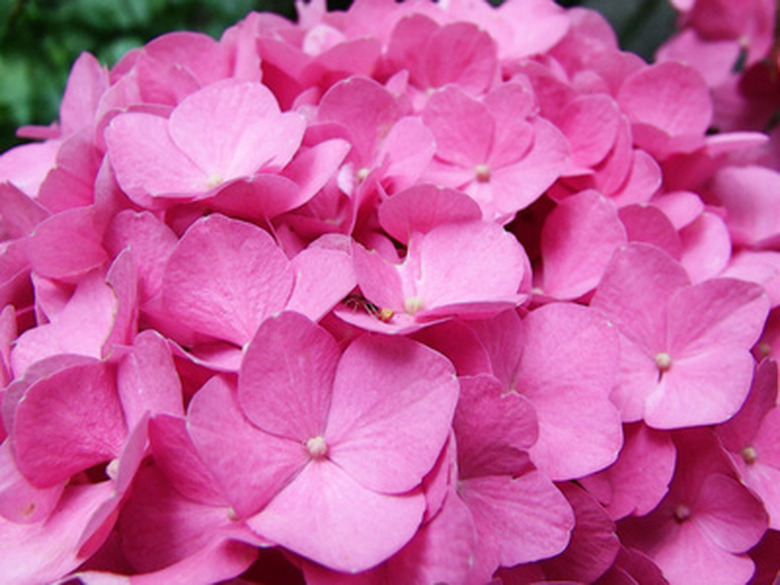Care For Hydrangeas In Pots
Hydrangea grows best in areas with mild winters and warm summers, but indoor potted hydrangeas can be grown in any area regardless of winter conditions. French hydrangea, smooth hydrangea and mountain hydrangea are some of the varieties that are especially well-suited to pot culture. While they can be grown year-round indoors, hydrangeas tend to grow larger and healthier when left outside during the warm months and brought indoors prior to winter. Care for your pot-grown hydrangeas properly to ensure they thrive.
Step 1
Place potted hydrangea in an area where they receive full sun or only afternoon shade. Set them near a south-facing window or on a patio or deck that receives the proper amount of light daily.
Step 2
Water the hydrangea when the soil surface begins to feel dry but before it begins drying deeper down. Water from the top of the pot until the excess water drips from the bottom. Empty the pot's drip tray after watering. Check soil moisture daily, especially on outdoor pots, as hydrangea may dry out quickly.
- Hydrangea grows best in areas with mild winters and warm summers, but indoor potted hydrangeas can be grown in any area regardless of winter conditions.
- Place potted hydrangea in an area where they receive full sun or only afternoon shade.
Step 3
Fertilize potted hydrangea with a balanced soluble fertilizer or a fertilizer formulated specifically for hydrangea. Apply at the rate and frequency indicated on the fertilizer label.
Step 4
Prune hydrangea with shears to keep the plant full and to maintain its shape. Remove any dead wood or leaves and cut back overgrown branches to the desired length. Prune in midsummer and again in fall if the plant has become overgrown.
Step 5
Transplant hydrangea into a three-gallon pot once it has filled its original container and the roots are beginning to show in the drainage holes. Fill the new pot with a peat-based, quality potting mix and plant the hydrangea to the same depth in the new pot that it was at in its old pot.
- Fertilize potted hydrangea with a balanced soluble fertilizer or a fertilizer formulated specifically for hydrangea.
- Transplant hydrangea into a three-gallon pot once it has filled its original container and the roots are beginning to show in the drainage holes.
Tip
A fully grown hydrangea is heavy. If you will be moving the pot, place it on a small wheeled cart to make relocation simpler. Hydrangeas may not bloom the first year. They begin their normal blooming cycle when they are 2 years old.
Warning
Too much shade and water makes hydrangea plants more prone to powdery mildew and other diseases.
Things Needed
- Fertilizer
- Shears
- Pot
- Potting mix
